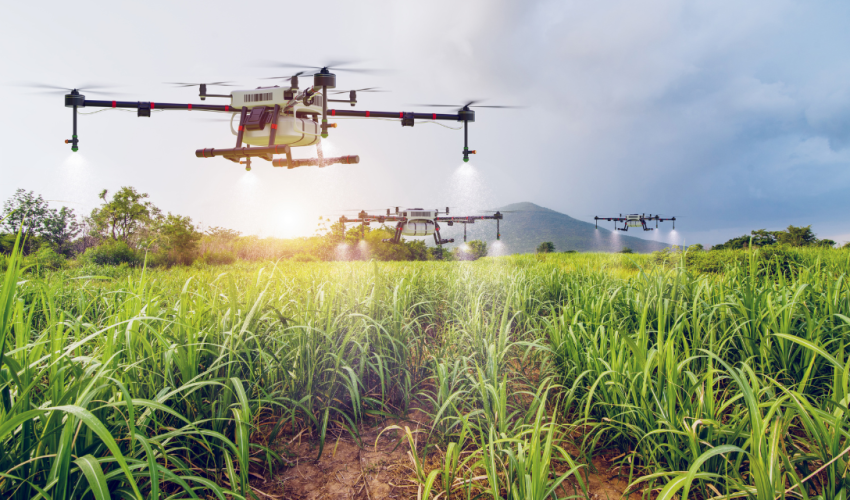Agriculture, a cornerstone of human civilization, is undergoing a significant transformation. Traditional farming, once heavily reliant on manual labor and generalized methods, is now incorporating sophisticated technologies. Today’s farms might feature IoT sensors, AI-driven data analytics, and automated machinery, all contributing to what is known as precision agriculture. This approach enhances efficiency by using technology to tailor farming practices to the specific needs of each plot of land.
The Emergence of Drone Technology in Agriculture
A pivotal element in this technological revolution is the advent of drone technology. Drones, or unmanned aerial vehicles (UAVs), are not just for photography or delivery services; they are now key players in modern agriculture.
Real-World Examples:
- California’s Vineyards: In California, some vineyards use drones equipped with multispectral imaging sensors to assess vine health, monitor hydration levels, and manage nutrient distribution, significantly improving the quality of wine production.
- Midwest Crop Monitoring: In the U.S. Midwest, farmers deploy drones to survey vast corn and soy fields. These drones collect data on crop health, pest infestations, and water distribution, leading to more targeted and effective farming strategies.
Comparing Land-Based and Drone-Based Systems:
- Efficiency in Monitoring: Traditional land-based monitoring methods, like manual field checks or stationary sensors, are time-consuming and often less accurate. Drones, in contrast, swiftly cover large areas, providing detailed aerial data that is far more comprehensive.
- Precision in Application: Land-based machinery, while effective, can be less precise in applying resources like water, fertilizers, and pesticides. Drones can precisely target areas in need, reducing waste and environmental impact.
- Cost Comparison: Initially, the cost of drone technology can be higher than traditional methods. However, the long-term savings in terms of reduced labor, lower resource wastage, and improved crop yields make drones a cost-effective solution in the longer run.
The Cost-Benefit Analysis of Drone Technology
Drone technology in agriculture isn’t just about replacing old methods; it’s about creating new efficiencies and opportunities. The initial investment, though substantial, is offset by long-term savings. Reduced labor costs, precise resource application, and improved crop yields all contribute to a favorable return on investment. Moreover, the environmental benefits of reduced chemical usage and better resource management are invaluable.
Looking Ahead: The Future of Drones in Agriculture
The potential of drone technology in agriculture is vast and still unfolding. As these technologies advance, we can expect them to become more accessible, more powerful, and more integrated into everyday farming practices. The future of agriculture is one where drones work in harmony with traditional methods, leading to a more sustainable, efficient, and productive industry.
The integration of drone technology into agriculture marks a significant shift towards more sustainable and efficient farming practices. Real-world examples already showcase the benefits of drones over traditional methods, with the promise of even greater advancements in the future. As we continue to innovate, the agricultural landscape is set to be reshaped, paving the way for a more prosperous and environmentally-friendly future.
